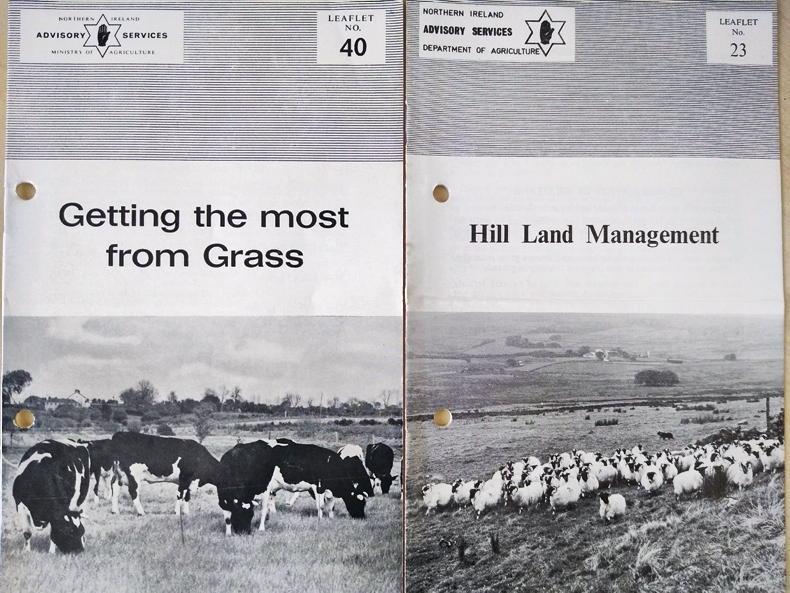If you talk to many older farmers in Northern Ireland (NI) they will often refer to the government department responsible for agriculture as “the ministry” and any adviser or inspector who works within it as “a ministry man”.
What is now the Department of Agriculture, Environment and Rural Affairs (DAERA) has been through a number of iterations over the years. It was renamed DAERA in 2016 as part of a shake up of government departments.
From December 1999, it had been known as the Department of Agriculture and Rural Development (DARD). Prior to that it was called the Department of Agriculture for NI (DANI).
But from the formation of NI in 1921 right up to when NI came under the direct rule of UK government ministers in 1972, it was known as “the Ministry of Agriculture”, hence the terminology around “the ministry man”.
It is probably fair to say that many farmers in NI have fond memories of the “ministry”. The remit for government officials back then was very much focused on education of young farmers, providing advice on farms, and administration of capital grant schemes.
Government wanted farmers to prosper by producing more, and farmers responded accordingly – there were periods of real economic hardship, but it was a good period to be a farmer.
However, times have changed, and while DAERA still provides education and advice via the CAFRE colleges at Greenmount (agriculture), Loughry (food) and Enniskillen (equine), many farmers now see it principally as an enforcer of rules.
Advisory leaflets
A few weeks ago, a retired DAERA civil servant who had started out as a “ministry man”, gave me a bundle of farm advisory leaflets dating back to when they were first published in the early 1960s.
Produced by “advisory services”, there are over 150 separate leaflets in the bundle, some of which run to up to 30 pages long and cover everything from managing grass, to making silage, pig housing, land drainage, cattle handling, milking parlours and farm finance. The leaflets were available free of charge to farmers, upon request.

The leaflet on grass was produced in 1964, while the advice on hill land management was published in 1981.
Looking through the publications, much of the advice is still relevant today. A publication from 1964 on “Getting the most from Grass” details out the different types and varieties of grass and clover, highlights the importance of applying lime and nutrients, and various options for grassland management. It advocates rotational grazing over set stocking, and makes reference to zero grazing as being “the latest development in the utilisation of pasture”.
Credit
For those farmers looking to expand their businesses there was extensive advice around farmyard planning, taxation and use of capital. In the 1970s money was a lot more expensive to borrow than it is now.
A leaflet from 1976 on obtaining farm credit outlined the repayments when borrowing at 13% interest, and covered the option of a hire purchase agreement, with rates up to 17%.
Hill
However, while much of the advice hasn’t changed much, one particular stand out area is in the management of hill land.
Going forward, farmers will be expected to rewet peatland as part of the fight against climate change, and to prevent further degradation of these areas, and the release of carbon. But in the early 1980s the advice was focused on making this land more productive.
Leaflet No. 23 on Hill Land Management tells farmers to open drains at 5m intervals and upwards, and to apply lime and fertiliser (especially phosphate). Surface seeding was also recommended, which involved two or three runs with a disc harrow, followed by grass seed (including clover) and fertiliser. The area could be rolled, or mob stocked with sheep for a few days.
If you do that sort of work today, the “ministry man” that comes to visit probably won’t know that Leaflet No. 23 ever existed, and is more likely to have a book of rules in their back pocket.
Read more
Changes at the top within DARD
New permanent secretary at DAERA
If you talk to many older farmers in Northern Ireland (NI) they will often refer to the government department responsible for agriculture as “the ministry” and any adviser or inspector who works within it as “a ministry man”.
What is now the Department of Agriculture, Environment and Rural Affairs (DAERA) has been through a number of iterations over the years. It was renamed DAERA in 2016 as part of a shake up of government departments.
From December 1999, it had been known as the Department of Agriculture and Rural Development (DARD). Prior to that it was called the Department of Agriculture for NI (DANI).
But from the formation of NI in 1921 right up to when NI came under the direct rule of UK government ministers in 1972, it was known as “the Ministry of Agriculture”, hence the terminology around “the ministry man”.
It is probably fair to say that many farmers in NI have fond memories of the “ministry”. The remit for government officials back then was very much focused on education of young farmers, providing advice on farms, and administration of capital grant schemes.
Government wanted farmers to prosper by producing more, and farmers responded accordingly – there were periods of real economic hardship, but it was a good period to be a farmer.
However, times have changed, and while DAERA still provides education and advice via the CAFRE colleges at Greenmount (agriculture), Loughry (food) and Enniskillen (equine), many farmers now see it principally as an enforcer of rules.
Advisory leaflets
A few weeks ago, a retired DAERA civil servant who had started out as a “ministry man”, gave me a bundle of farm advisory leaflets dating back to when they were first published in the early 1960s.
Produced by “advisory services”, there are over 150 separate leaflets in the bundle, some of which run to up to 30 pages long and cover everything from managing grass, to making silage, pig housing, land drainage, cattle handling, milking parlours and farm finance. The leaflets were available free of charge to farmers, upon request.

The leaflet on grass was produced in 1964, while the advice on hill land management was published in 1981.
Looking through the publications, much of the advice is still relevant today. A publication from 1964 on “Getting the most from Grass” details out the different types and varieties of grass and clover, highlights the importance of applying lime and nutrients, and various options for grassland management. It advocates rotational grazing over set stocking, and makes reference to zero grazing as being “the latest development in the utilisation of pasture”.
Credit
For those farmers looking to expand their businesses there was extensive advice around farmyard planning, taxation and use of capital. In the 1970s money was a lot more expensive to borrow than it is now.
A leaflet from 1976 on obtaining farm credit outlined the repayments when borrowing at 13% interest, and covered the option of a hire purchase agreement, with rates up to 17%.
Hill
However, while much of the advice hasn’t changed much, one particular stand out area is in the management of hill land.
Going forward, farmers will be expected to rewet peatland as part of the fight against climate change, and to prevent further degradation of these areas, and the release of carbon. But in the early 1980s the advice was focused on making this land more productive.
Leaflet No. 23 on Hill Land Management tells farmers to open drains at 5m intervals and upwards, and to apply lime and fertiliser (especially phosphate). Surface seeding was also recommended, which involved two or three runs with a disc harrow, followed by grass seed (including clover) and fertiliser. The area could be rolled, or mob stocked with sheep for a few days.
If you do that sort of work today, the “ministry man” that comes to visit probably won’t know that Leaflet No. 23 ever existed, and is more likely to have a book of rules in their back pocket.
Read more
Changes at the top within DARD
New permanent secretary at DAERA







 This is a subscriber-only article
This is a subscriber-only article










SHARING OPTIONS: